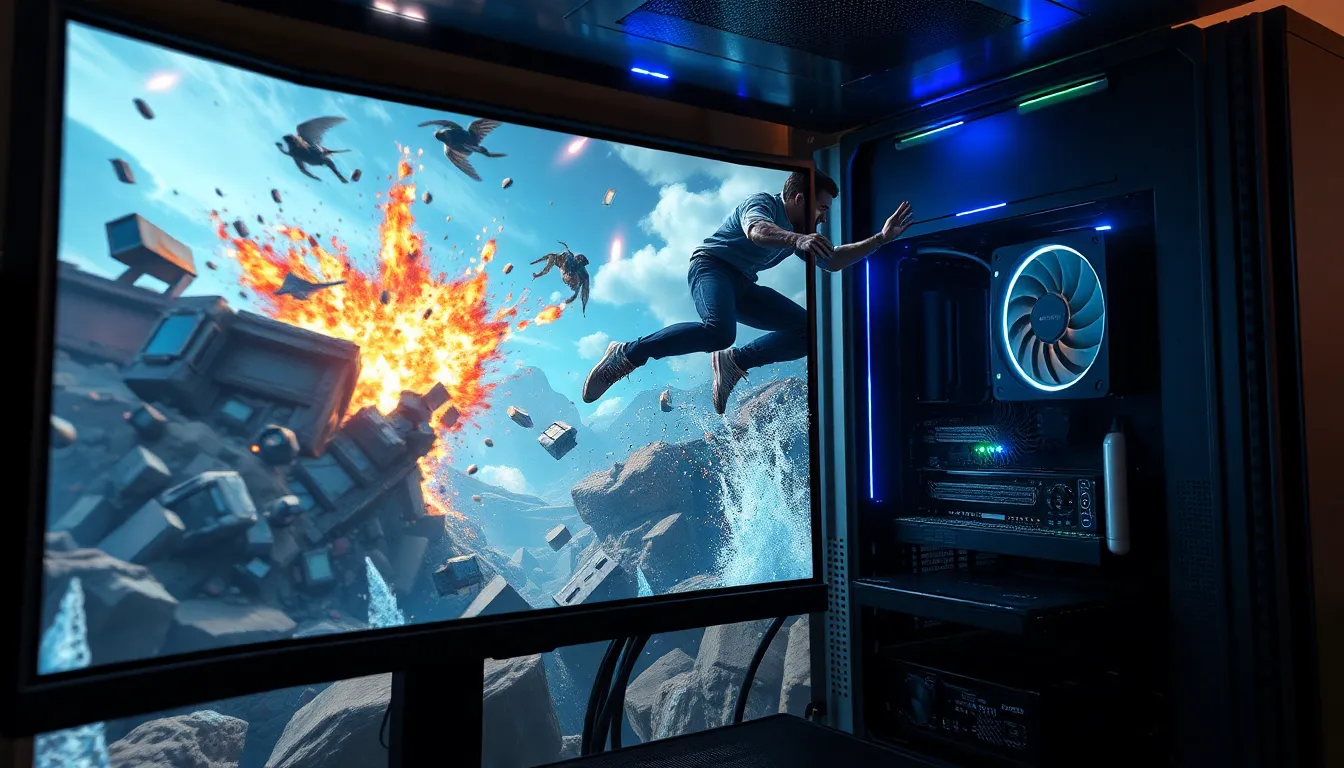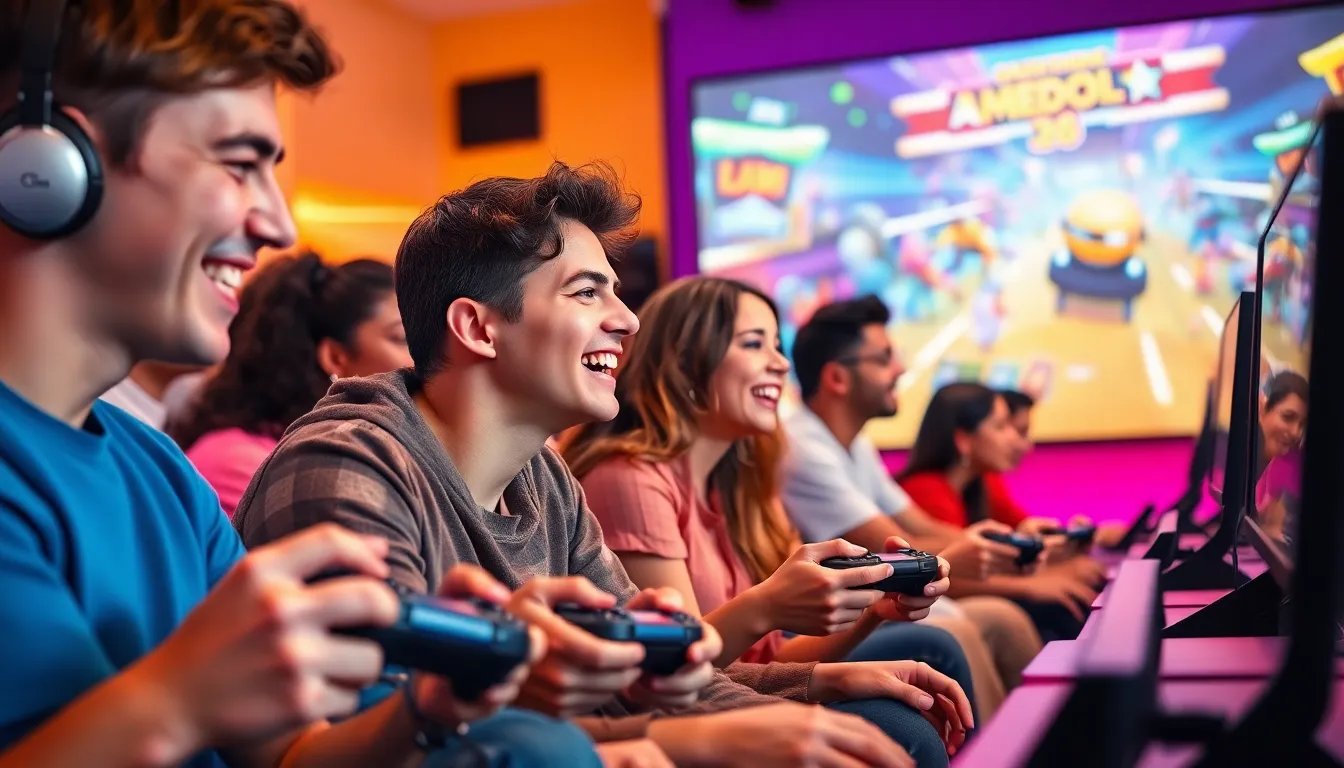Table of Contents
ToggleIn the world of gaming, nothing pulls players in quite like the thrill of realistic physics. Imagine launching your character off a cliff only to defy gravity like a rebellious superhero. Game physics accuracy isn’t just a fancy term; it’s the secret sauce that transforms a good game into an unforgettable experience.
Understanding Game Physics Accuracy
Game physics refers to the simulation of physical systems in video games. Accurate game physics enables realistic interactions between characters and environments, ensuring that movement and behaviors mirror real-world physics.
Definition of Game Physics
Game physics involves calculations that create a realistic representation of motion, forces, and interactions in virtual environments. It encompasses a variety of elements, including rigid body dynamics, fluid dynamics, and particle systems. Developers use these principles to simulate behaviors like gravity, friction, and collisions. When executed correctly, game physics helps deliver an immersive experience within gameplay, facilitating player engagement and ensuring consistent outcomes based on user actions.
Importance of Accuracy in Gaming
Accuracy in game physics significantly enhances gameplay realism. Realistic physics can elevate immersion by making virtual interactions believable. Players react more positively to environments that respond naturally to their actions, whether it’s a character jumping or an object rolling. Accurate simulations provide a predictable and enjoyable gaming experience, supporting effective decision-making during gameplay. Games with precise physics often receive higher user ratings and player retention, demonstrating the direct link between accuracy and player satisfaction.
Factors Influencing Game Physics Accuracy

Game physics accuracy depends on several key factors that significantly impact simulation quality and player immersion. Understanding these elements is crucial for developers aiming to create realistic gaming experiences.
Hardware Limitations
Hardware performance directly influences game physics accuracy. Lower-end systems struggle with complex calculations, resulting in simplified physics simulations. High-end hardware consistently delivers accurate simulations of motion and interactions. Graphics Processing Units (GPUs) enhance physics calculations, allowing for smoother and more realistic movements. Limited memory capacity affects the number of objects that can interact simultaneously. Developers need to optimize code to account for various hardware configurations. Targeting a wider audience involves balancing realism with performance requirements across multiple hardware types.
Software Algorithms
Software algorithms shape the fidelity of game physics. Advanced algorithms enable the simulation of realistic movements and interactions with precision. Rigid body dynamics algorithms calculate object collisions, ensuring natural responses to impacts. Fluid dynamics algorithms simulate water and air movements realistically. CPU-based calculations usually handle physics processing, while hybrid approaches combine software and hardware solutions. Efficient algorithms minimize processing time, allowing for real-time interaction without sacrificing accuracy. Continuous advancements in physics engines refine simulation quality and enhance player experiences.
Measuring Game Physics Accuracy
Game physics accuracy plays a vital role in creating immersive experiences. Developers utilize various metrics and tools to assess this accuracy.
Common Metrics and Standards
Metrics provide a framework for evaluating game physics performance. Frame rate remains critical, with 60 frames per second as a popular target for smooth gameplay. Collision detection accuracy measures how well game objects interact, with precision being key for realism. Additionally, response time evaluates how quickly the game reacts to player inputs. Standard benchmarks offer guidance, but custom metrics tailored to specific games yield the most relevant insights.
Tools and Techniques for Measurement
Developers use a variety of tools for measuring physics accuracy effectively. Physics engines such as Havok and Unity’s built-in physics facilitate real-time assessment of dynamics. Profiling tools enable developers to analyze performance, pinpointing areas needing optimization. Additionally, stress testing allows simulation of various scenarios to evaluate system limits. In-game debugging options, including visual overlays, provide immediate feedback during development, ensuring accurate physics simulations as intended.
Impact of Game Physics Accuracy on Gameplay
Game physics accuracy plays a crucial role in shaping the gaming experience. Realistic interactions create a compelling atmosphere, which keeps players engaged and immersed.
Player Experience
Game physics accuracy directly influences player experience. It enables lifelike movements that resonate with players, enhancing enjoyment. When game environments respond realistically to player actions, immersion increases. Characters that react naturally to forces add authenticity, making gameplay thrilling. Think of a character performing parkour; accurate physics allow for smooth transitions and the feeling of weight. Players appreciate when game elements mimic real-world behavior, elevating satisfaction. Natural reactions contribute to the emotional connection players develop with the game. Ultimately, well-executed physics translate into higher user ratings and longer play sessions.
Game Design and Development
Game design and development benefit significantly from an accurate physics engine. Designers rely on physics accuracy to construct believable worlds. Engaging gameplay mechanics often stem from how well physics integrates with design elements. Implementing accurate simulations ensures that developers can create puzzles and challenges requiring players to use physics understanding. Frameworks evolve as developers embrace advanced algorithms that facilitate smoother interactions. Testing physics under real-world scenarios helps identify inaccuracies, ensuring that gameplay remains enjoyable and intuitive. Game developers incorporate comprehensive tools to enhance simulation fidelity, promoting a better overall gaming experience.
Future Trends in Game Physics Accuracy
The future of game physics accuracy promises remarkable advancements. Emerging technologies play a significant role in this evolution, enabling more realistic simulations. Virtual reality (VR) and augmented reality (AR) set new standards by immersing players in dynamic environments that respond with precision. Machine learning enhances physics engines, allowing adaptive behaviors that create realistic interactions. Moreover, cloud computing resources provide the necessary power to perform complex calculations without burdening local hardware.
Potential innovations will reshape the landscape of gaming. Advanced algorithms are expected to simplify calculations while boosting accuracy. Real-time ray tracing, for instance, dramatically improves lighting interactions, lending an added layer of realism. Enhanced physics simulations are likely to incorporate materials that behave like their real-world counterparts, influencing gameplay. Additionally, the integration of AI could further refine character movements, creating lifelike animations and responses to player inputs. As these technologies develop, players can expect experiences that blend reality and imagination seamlessly.
Accurate game physics is essential for creating immersive and engaging gaming experiences. As technology continues to advance developers are better equipped to implement realistic simulations that enhance player interaction. The integration of emerging technologies like VR and machine learning will further elevate the standards of game physics accuracy.
By focusing on precision in physics calculations developers can craft believable worlds that resonate with players. This attention to detail not only improves gameplay but also fosters emotional connections, leading to higher user satisfaction. As the gaming landscape evolves players can look forward to increasingly realistic and captivating experiences that blur the lines between reality and imagination.







